GadgetInspector源码阅读学习
学习下SAST的内容,先从GadgetInspector开始。
涉及到大量asm和java字节操作码的知识,有点困难,日后还是要系统学下好。
文章参考:
https://tttang.com/archive/1683/
网上很多文章感觉讲的很明白了,这里记录下核心逻辑的笔记。
局部污点分析
逆拓扑排序
首先要了解逆拓扑排序,例如一个有向无环图
1 | |
这里,节点 D 依赖于 B 和 C,而 B 和 C 都依赖于 A
我想知道D是否依赖于A,那么就可以从逆拓扑排序的结果里找了。
比如这个排序结果就是[D, B, C, A] ,但注意的是,逆拓扑只能保证一个大概结果,比如我们无法判断B,C之间的关系。所以要判断这类关系还要看原始图结构
GadgetInspector的拓扑排序是基于DFS的,网上文章有很多,原理不写了,直接看他怎么实现的。
1 | |
污点分析
在抵达一个方法的时候,先把this放在局部变量表第一位
然后来到TaintTrackingMethodVisitor#visitVarInsn
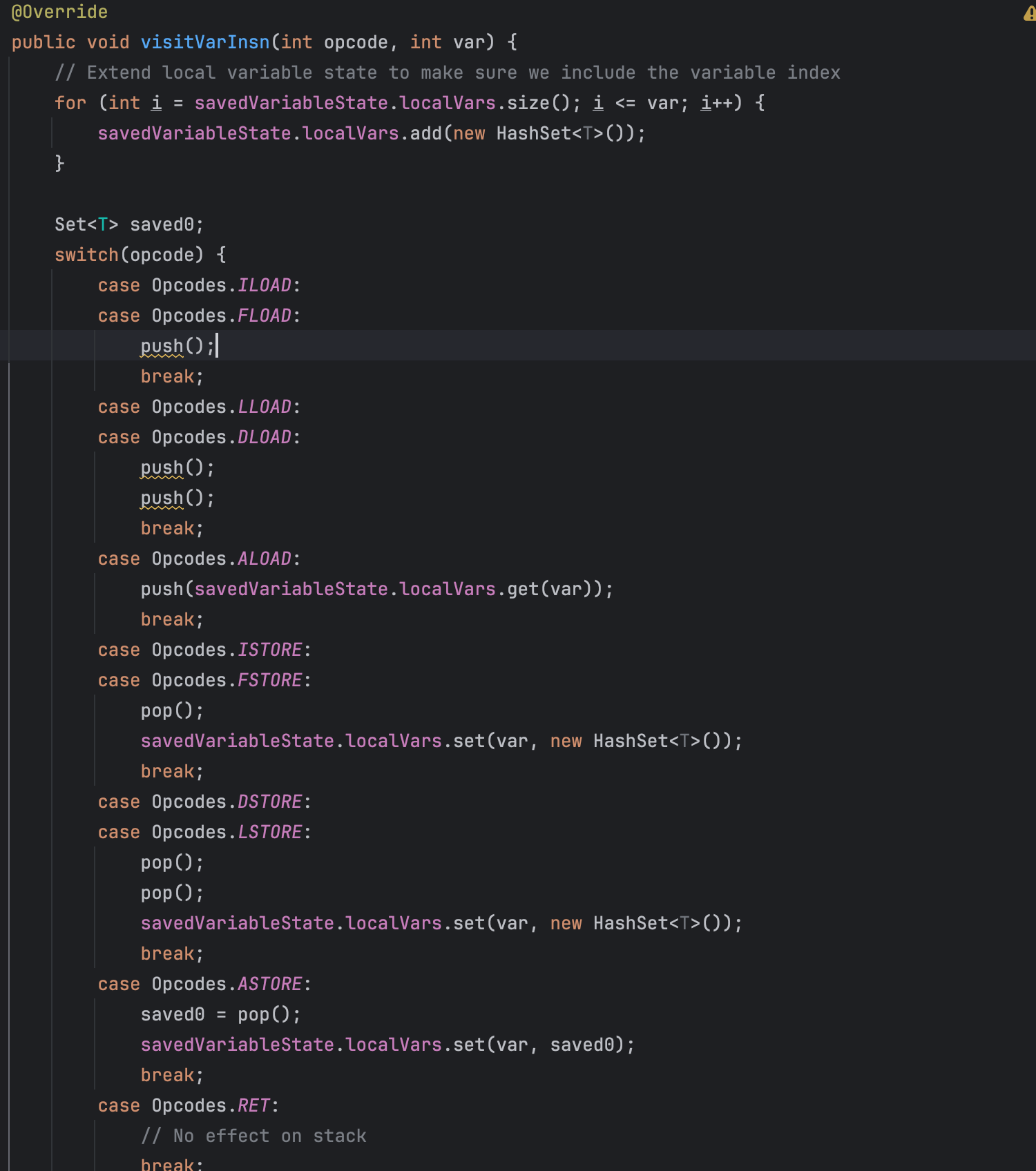
ALOAD是引用类型的(对象),其他几个Int Float Double Long,反序列化中没啥用,直接给他忽略了。所以只有ALOAD分支才入操作数栈
然后来到PassthroughDiscovery#visitInsn
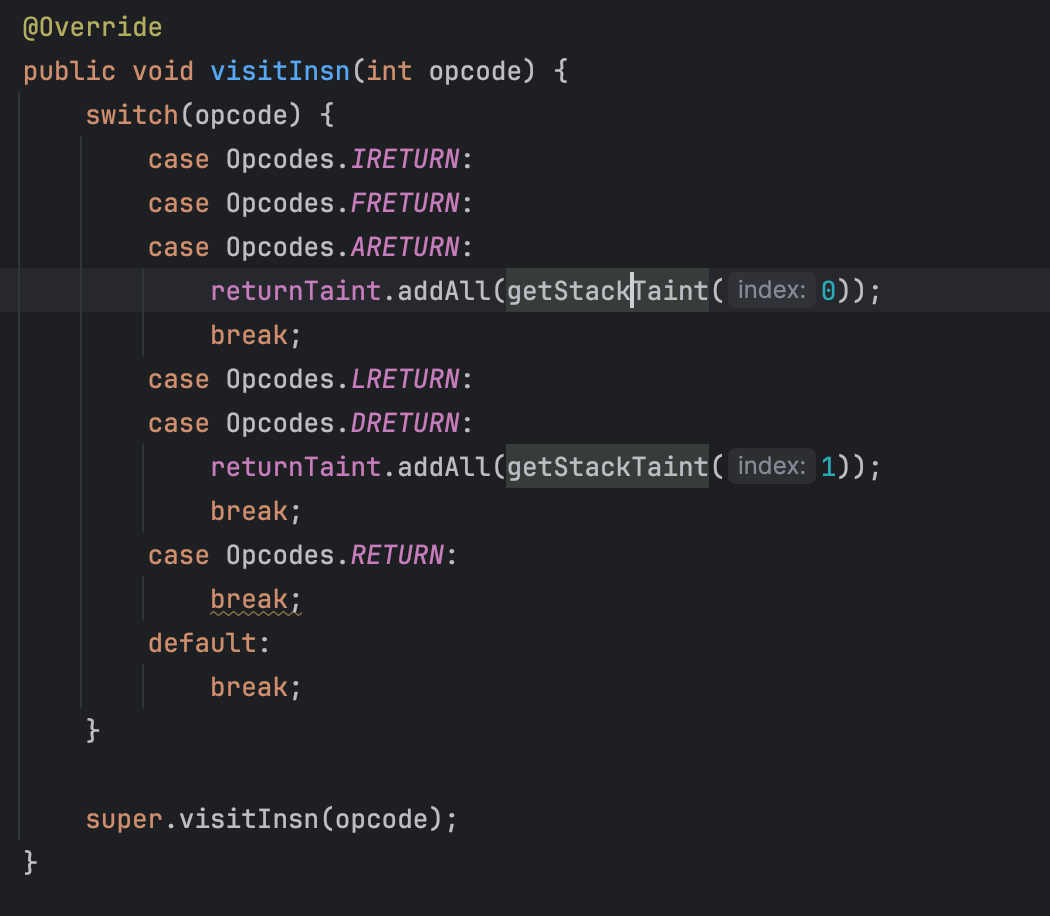
如图,会从操作数栈里获取污点

为啥是拿栈顶的呢?因为JVM规定,返回值总是位于栈顶。
但是这里有点没太搞懂,他结果不是有可能有多个索引吗,这样的话只能获取一个?
最后会回到gadgetinspector.PassthroughDiscovery#calculatePassthroughDataflow
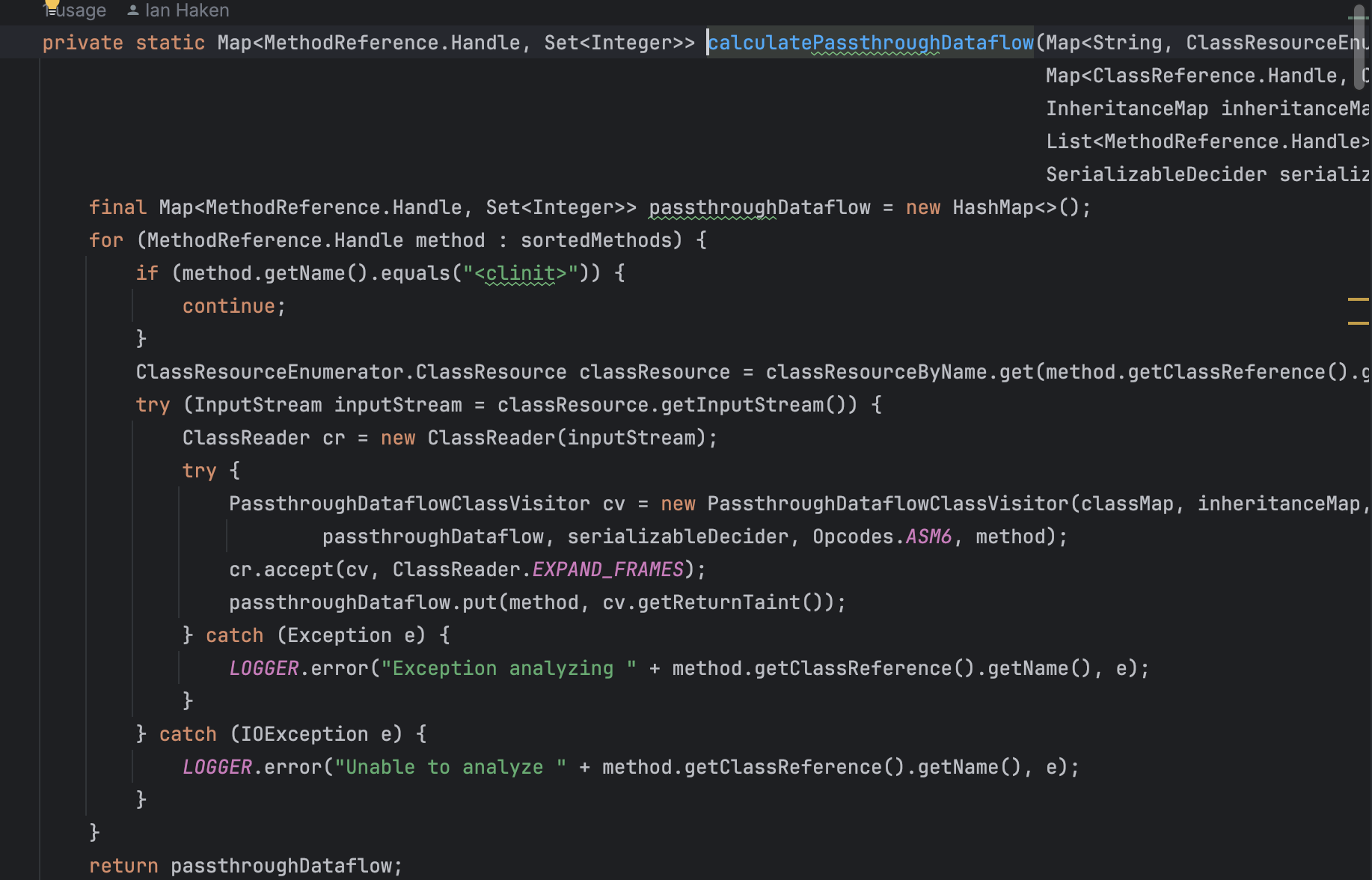
缓存结果在passthroughDataflow
那么假如在某个函数里调用了另一个函数呢?此时就会来到:visitMethodInsn
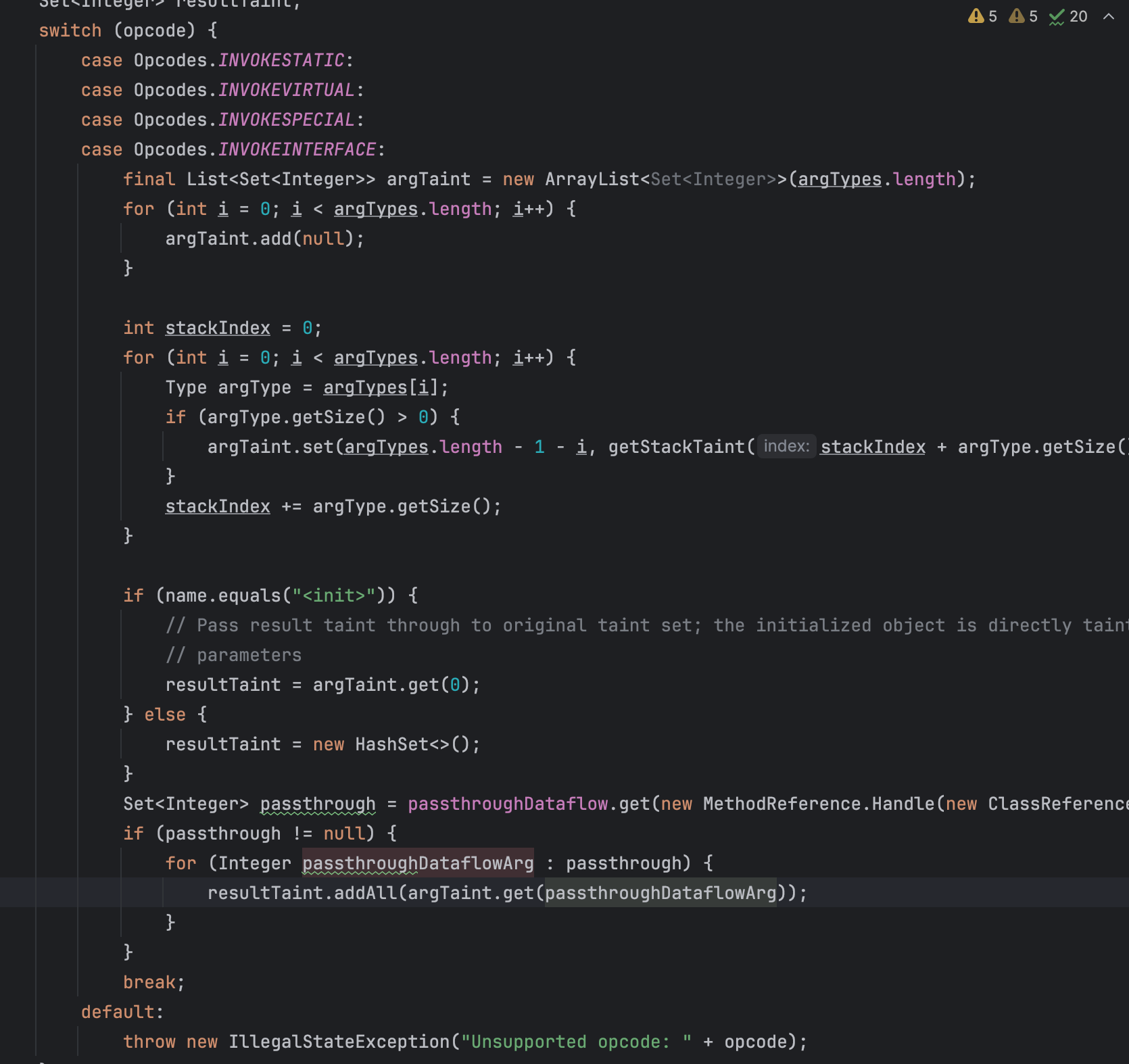
如图,重点在最后几行。passthroughDataflow就是之前的缓存结果,这也是为什么要逆拓扑排序。实际debug时,总是Object的构造函数最先被分析,因为Object是所有类的父类,其构造函数当然处于逆拓扑排序的开头部分。
这样,在某个函数调用另一个函数的时候,总可以在缓存里取到结果。
callgraph部分和这部分差不多,就不写了。
SourceDiscovery
这个类是决定反序列化入口的抽象类,可以先看其子类JacksonSourceDiscovery
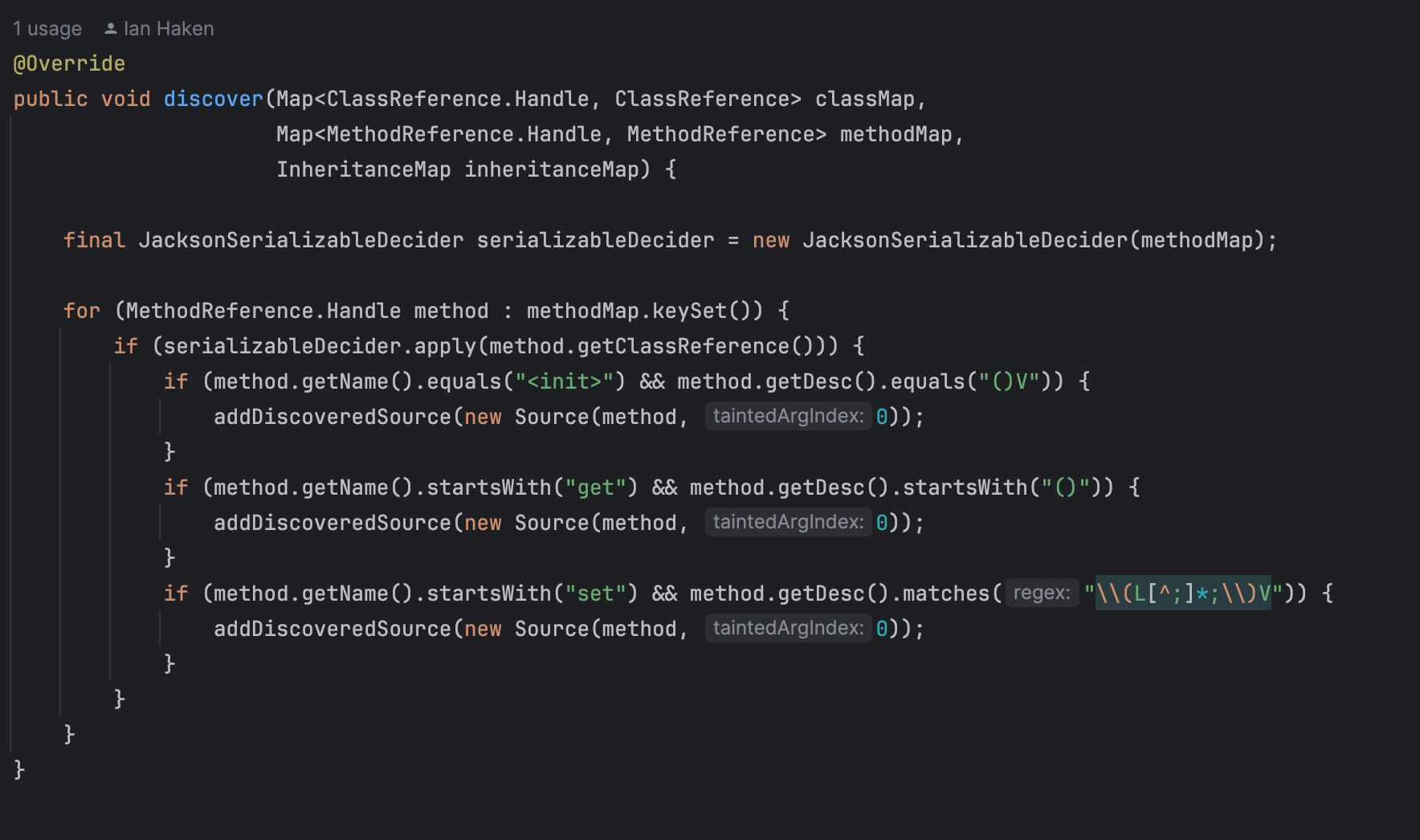
非常简单,构造函数,getter和setter可以作为入口。那么另一个呢?
SimpleSourceDiscovery
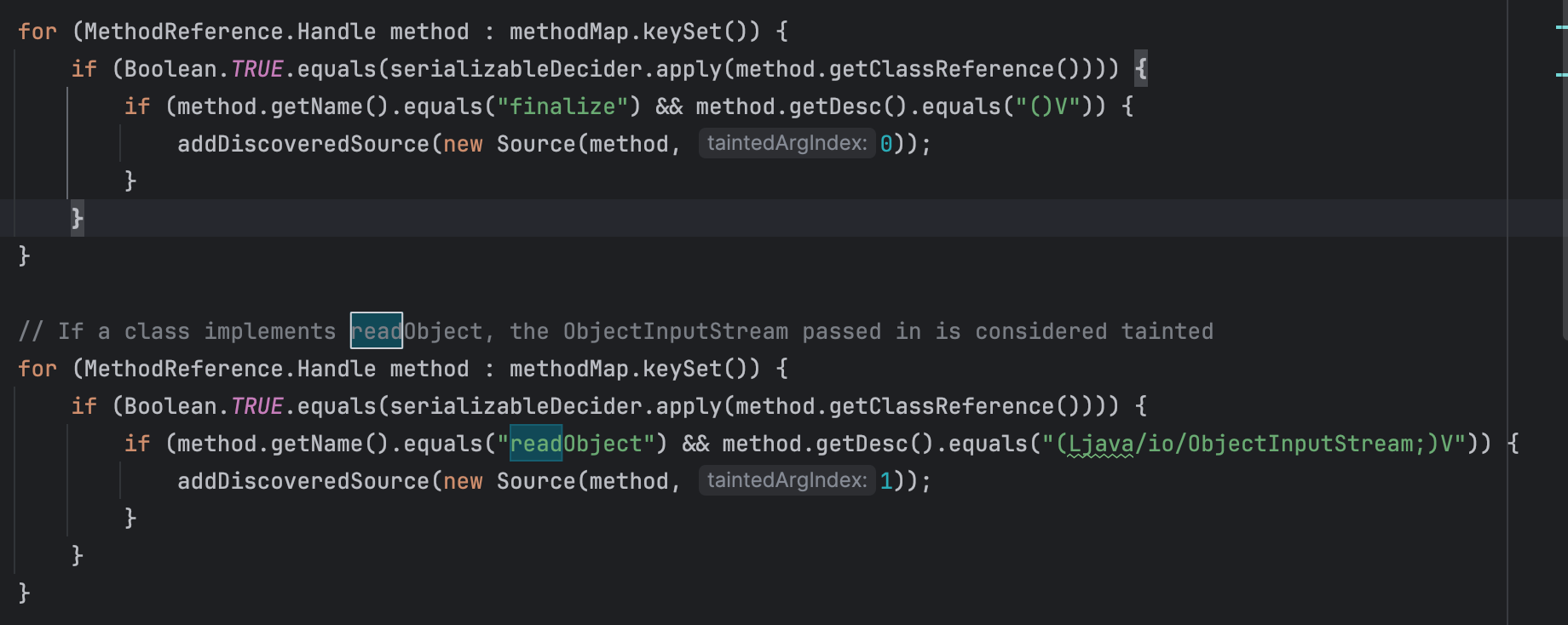
第一次才知道java有这个方法,类似php的__destruct,实际环境中根本没人这么写!
然后看readObject,原生的反序列化入口。

看网上的文章老说无法处理动态代理,看起来作者后来是加进去了。
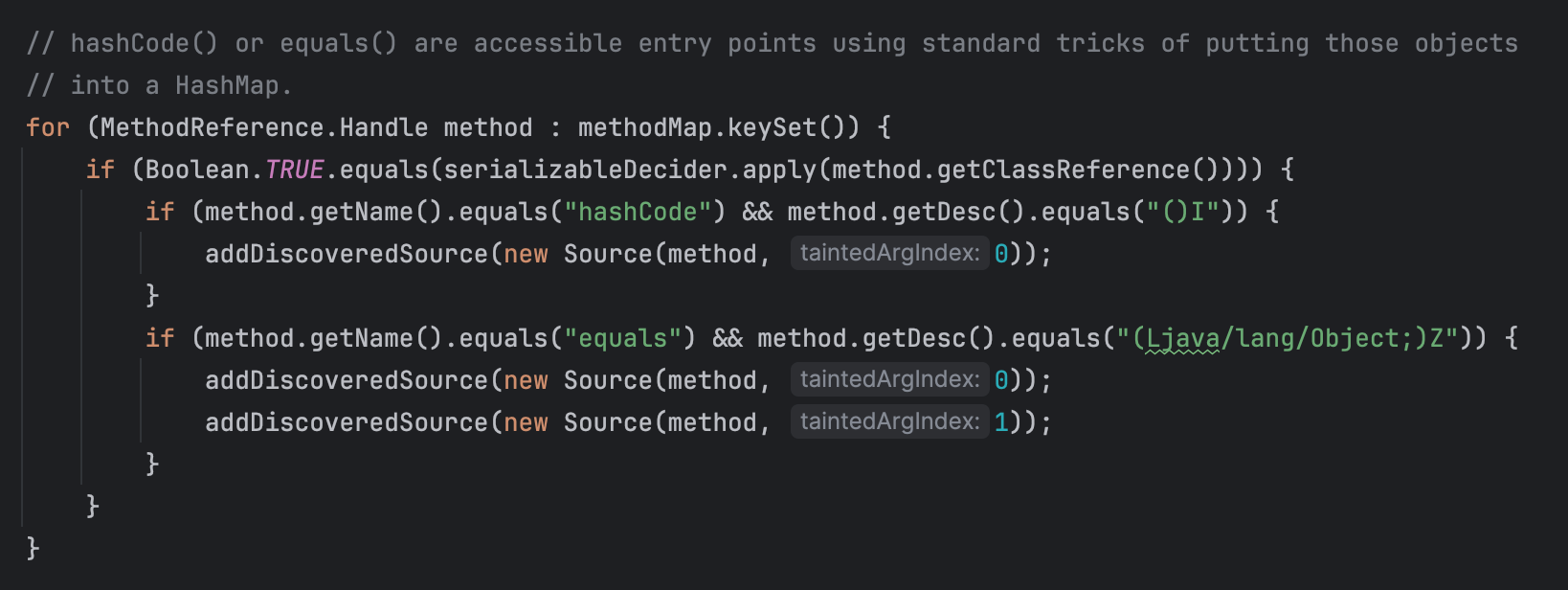
hashCode和equals也可以作为入口,可以把他们丢进hashMap触发。
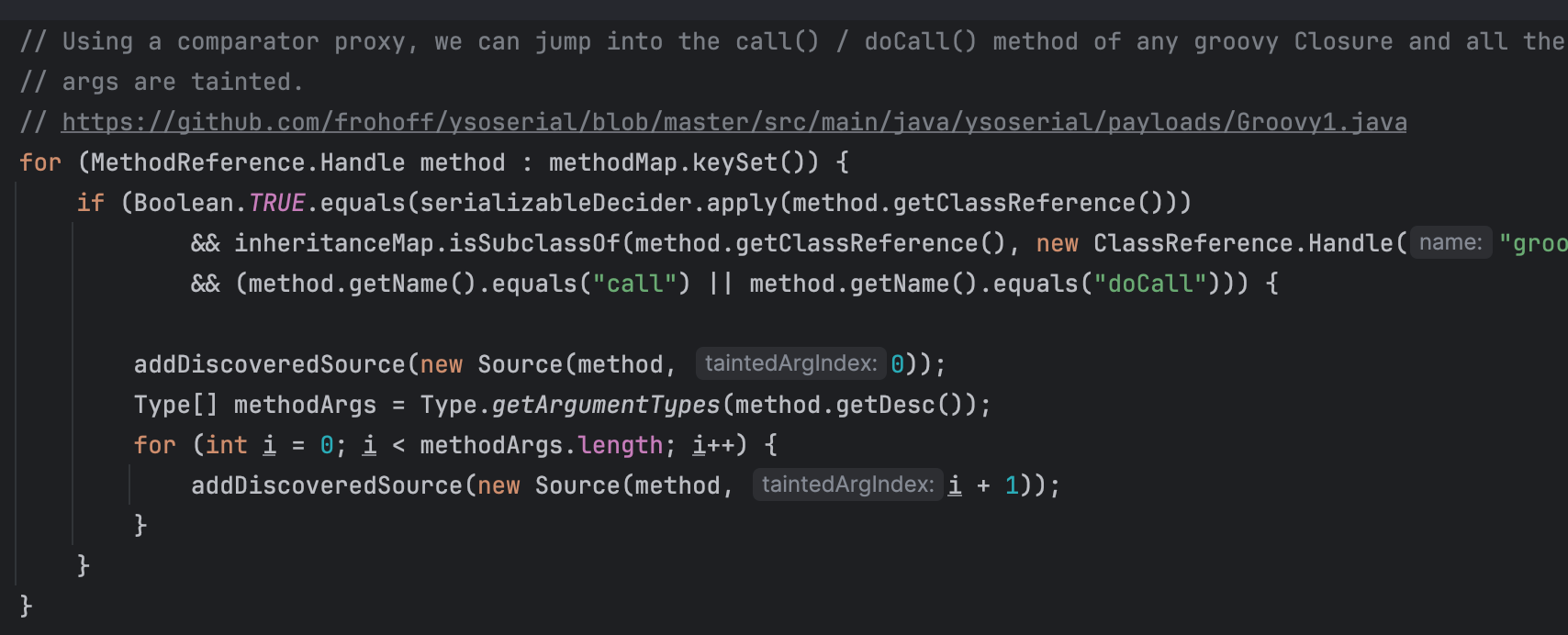
最后是一个groovy的代理
1 | |
利用链挖掘
第二关键的部分,现在我们已经有了所有想要的数据,接下来就是利用链挖掘的算法了。

首先加载了methodMap和inherianceMap,这些是在污点分析之前生成的。
methodMap里面是所有的方法,包含方法名,描述符等信息。
inheritanceMap结构是{某个类:{所有父类/接口集合}}
因为java可以重写方法,运行时不确定是哪个类。例如
AbstactClass 和 ImplementationClassA, ImplementationClassB
假设声明AbstractClass clazz。这个clazz可以是上面三者任意一个,只有运行时才能确定。
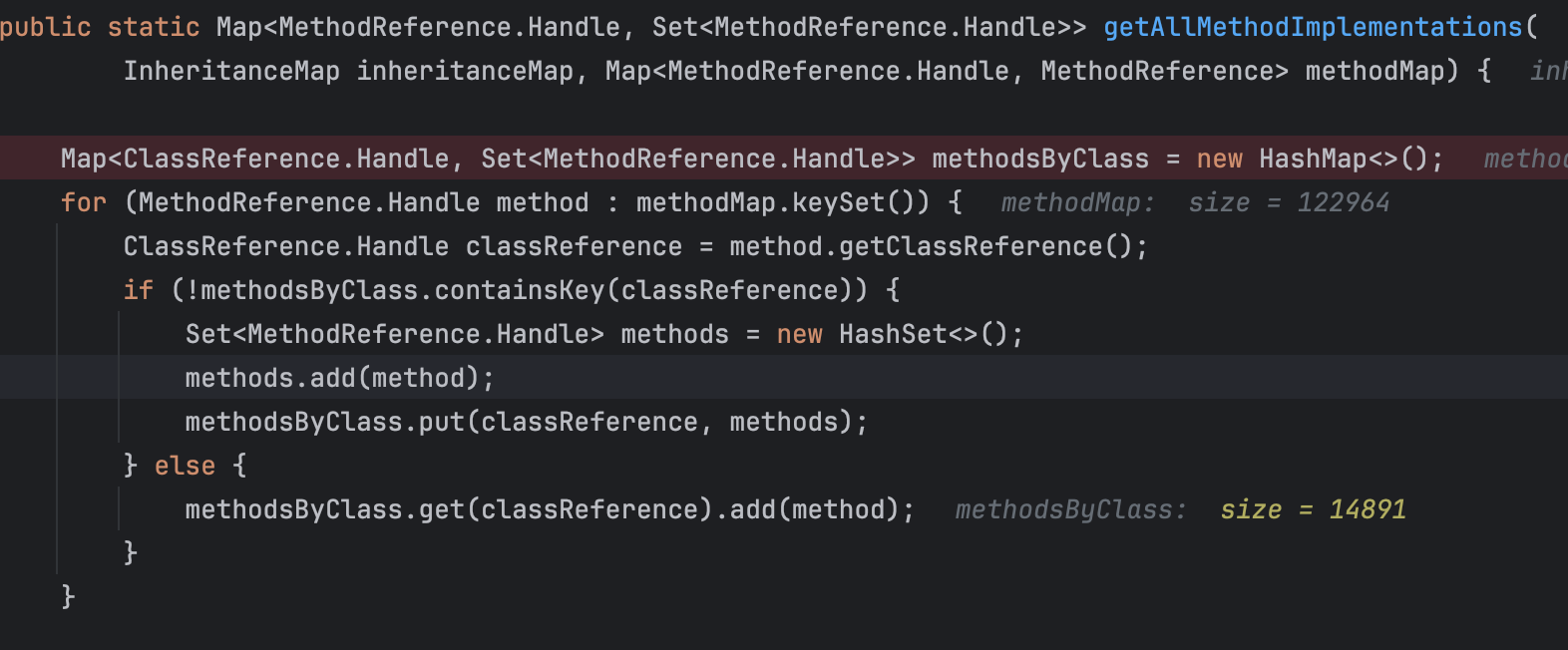
methodsByClass结构:{某类:{该类所有方法}}
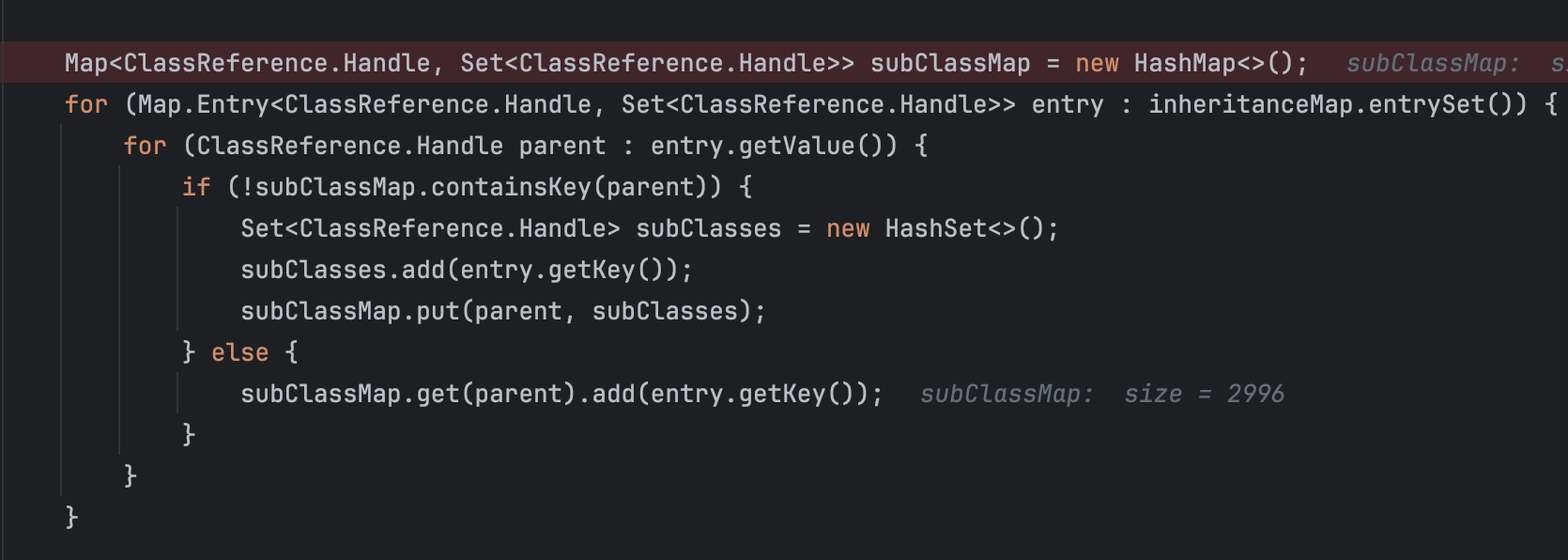
然后生成subClassMap,结构是:{某类:{所有子类/实现}}。和inheritanceMap刚好相反
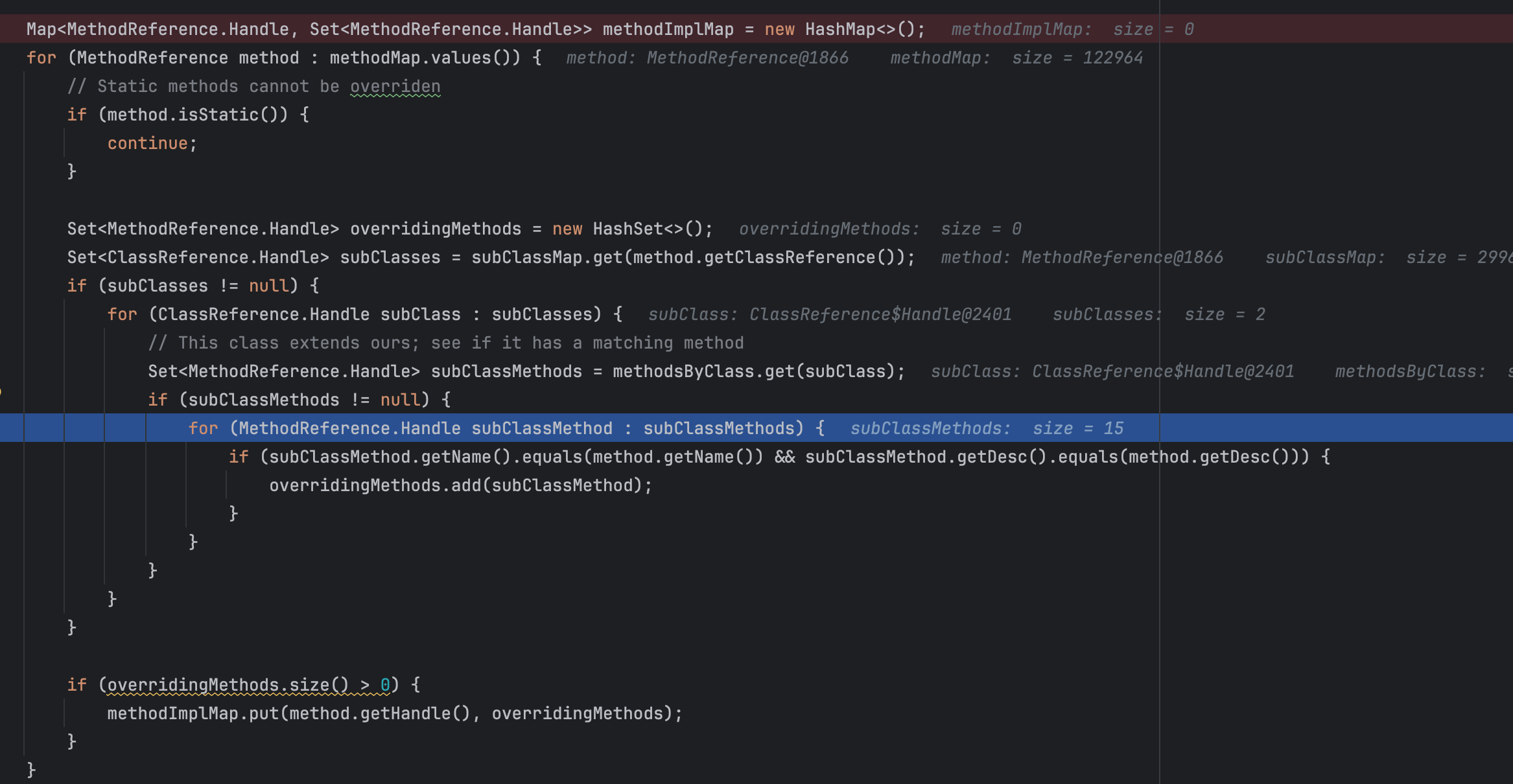
遍历methodMap,首先判断method是否静态,静态方法不可被重写,是的话直接跳。
然后获得该方法对应的类 的所有子类的方法,一个一个检查是否重名并且描述符相同(重写方法)。如果有丢到overridingMethods。最后再丢到methodImplMap
所以methodImplMap的结构:{某方法:{它的所有重写方法}}

回到GadgetChanDiscovery#discover, 这里对callGraph也做了整合,最终graphCallMap结构大致为:{某方法:{该方法里调用的所有方法}}

这一步是source初始化,GadgetChainLink包含了sourceMethod和污点参数的信息。
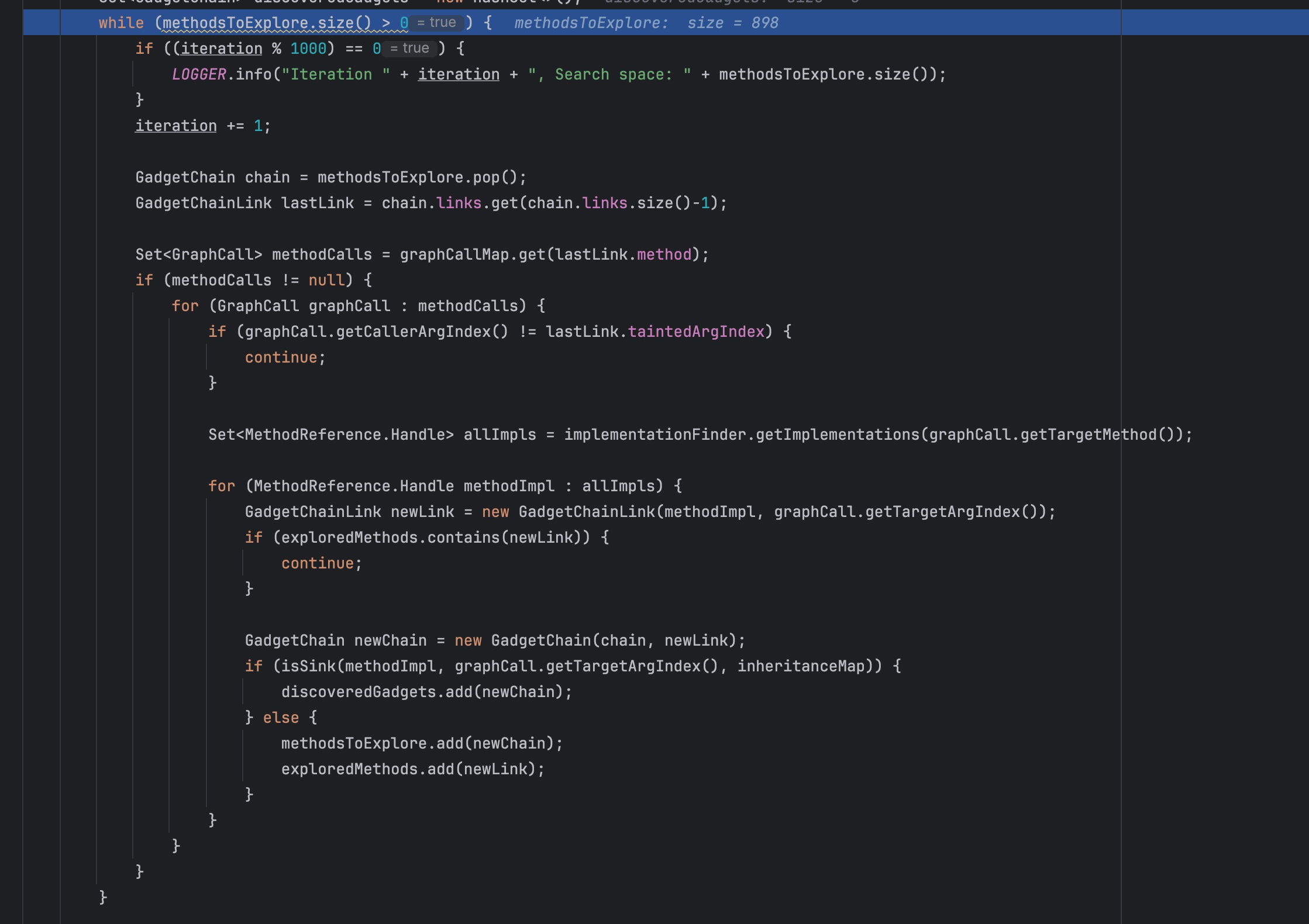
最后一步了。
1 | |
先从methodsToExplore弹出一个chain,然后获取这个chain的最后一个Link节点。
1 | |
从graphCallMap获取这个Link节点方法中,调用的所有其他方法。
1 | |
然后进入遍历,判断是否能被参数污染,不能就跳
1 | |
获取被调用的方法的所有重写/实现。再次遍历这个集合:
1 | |
生成新Link节点,if防止死循环。如果没问题就生成newChain,由之前的chain和newLink拼接而成。
1 | |
判断是不是sink,是的话加入discoverdGadgets,不是的话,丢进methodsToExplore,以后循环遍历的时候继续往下找。并且还要计入exploredMethods防止重复。
随着methodsToExplore不断pop,exploredMethods不断增加,最后methodToExplore大小为0时,遍历结束,将结果写入txt文件里。
完。